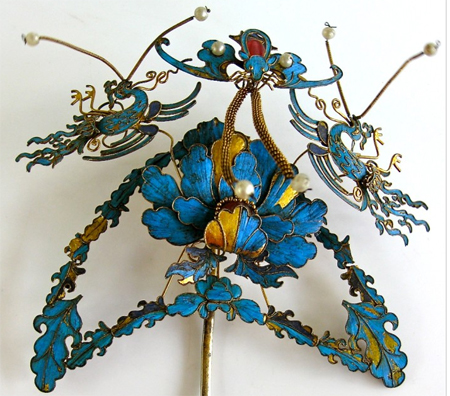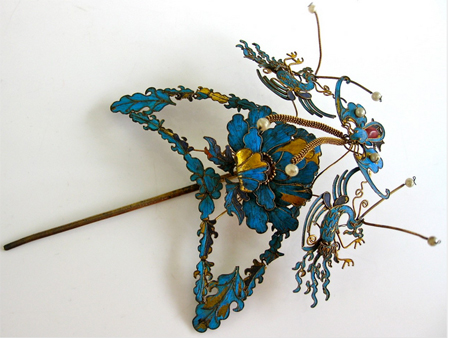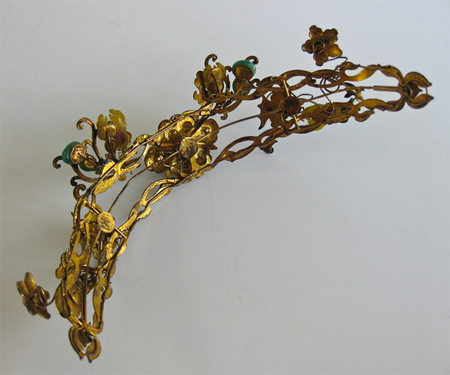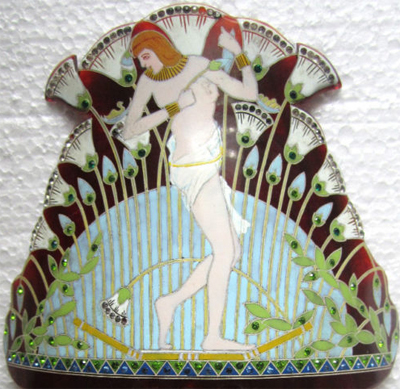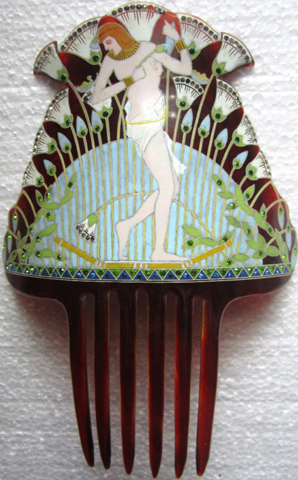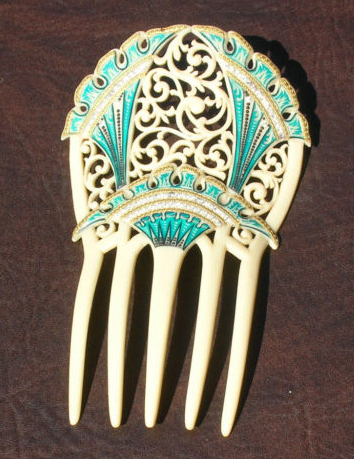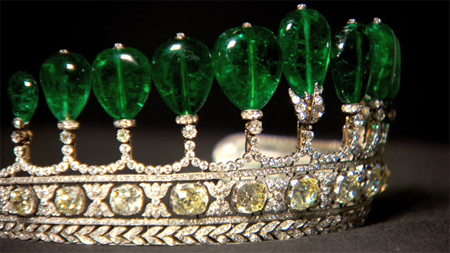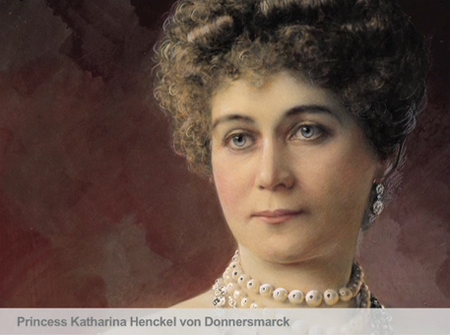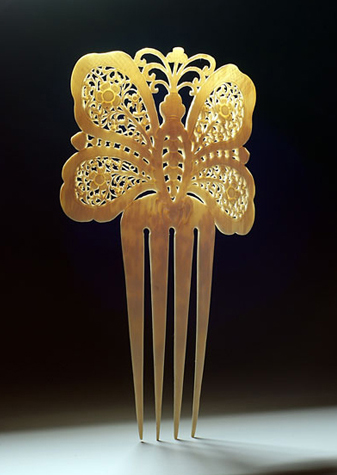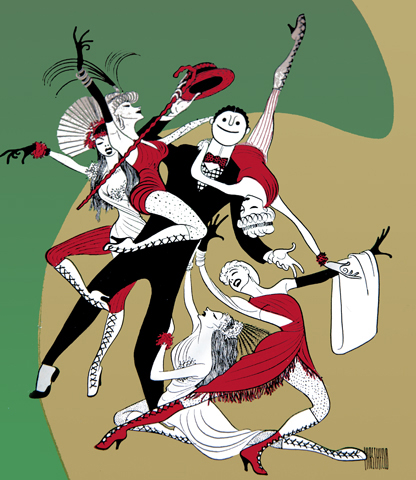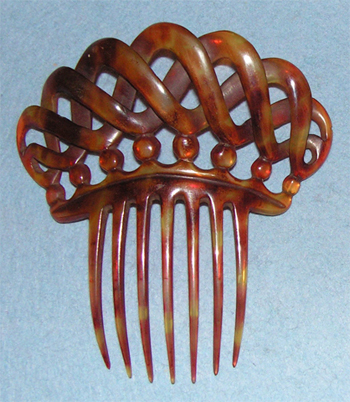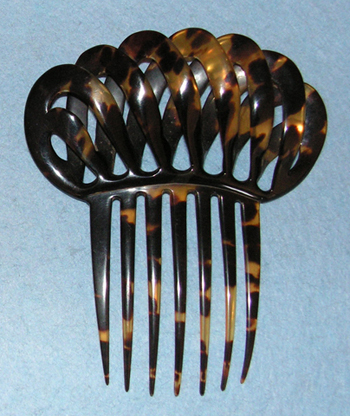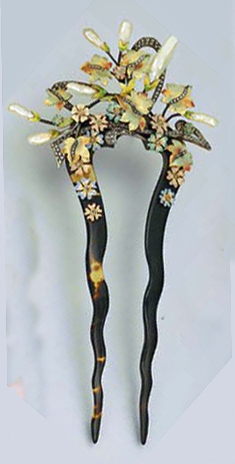Who invented celluloid? The credit cannot go to one person or one continent. However, the world’s first thermoplastic was registered in 1870. With celluloid, heat and machines could be used to mold, cut, and carve many objects per hour for the first time. Capitalists invested. Artists’ imaginations went wild. Endless possibilities of color, shape, and intricacy gave birth to the Art Deco Movement, and the Industrial Revolution met comb making.
Two of the most famous manufacturing areas at the turn of the 20th Century were in Leominster, Massachussets, and France’s Oyonnax Valley. Leominster combs were unsigned. However, the most famous designer of Oyonnax was Auguste Bonaz.
What I want to show is how designer, material, hand tools, machine, manufacturing process, and factory were one, while the art had infinite identities.
This comb-rubbing machine resides in an old Leominster factory. It made about 1300 revolutions per minute and held the parts of celluloid combs together.
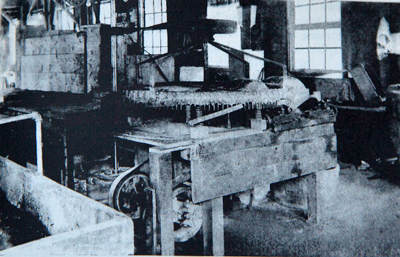
These are tools used by Leominster factory workers to do hand work on more expensive pieces.
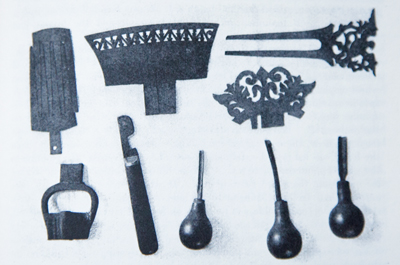
This machine is a Farnham Plummer, which could cut 120-dozen side combs a day, in horn. It could be constructed to cut combs of any size.
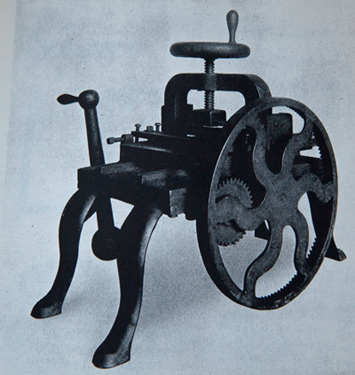
In Oyonnax, you see a factory of similar turning machines made by French inventors.
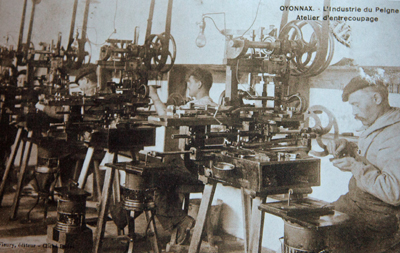
And here is the breathtaking art they produced.
American Celluloid Combs from The Creative Museum.
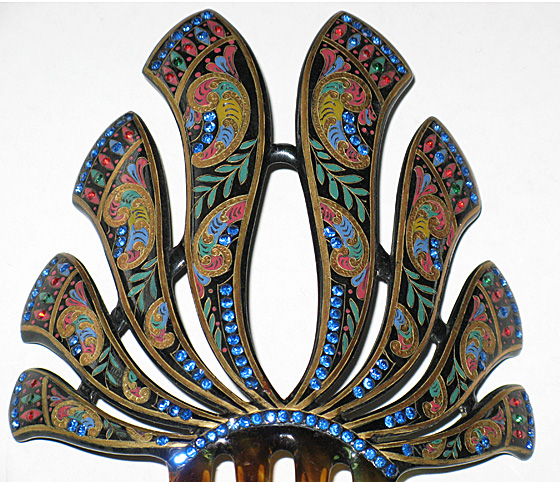
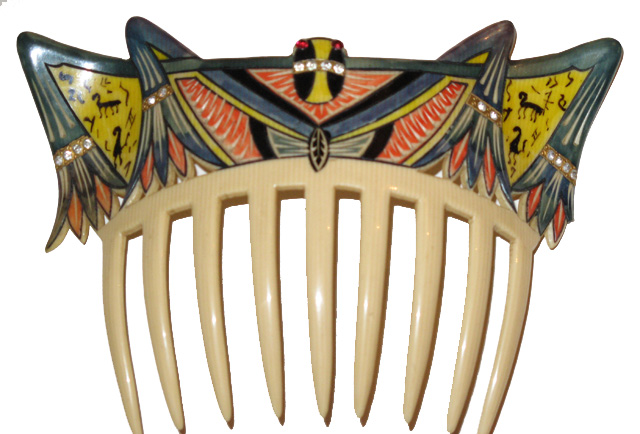
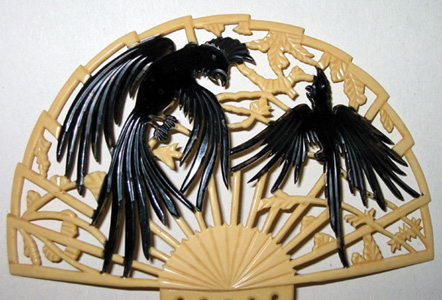
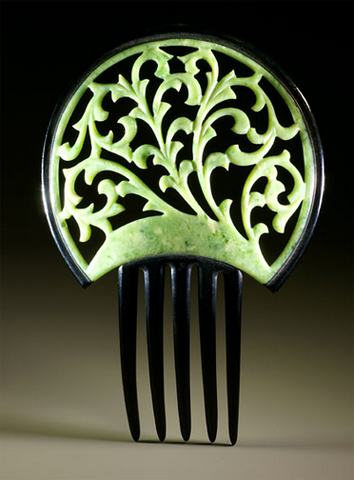
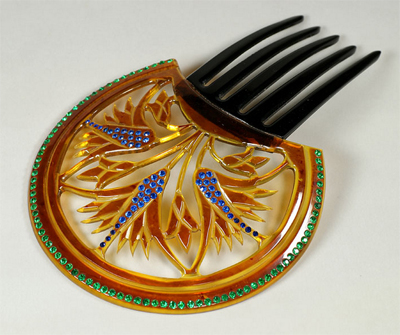
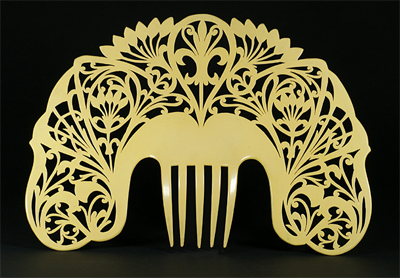
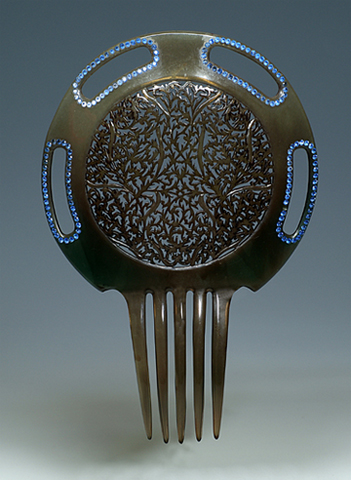
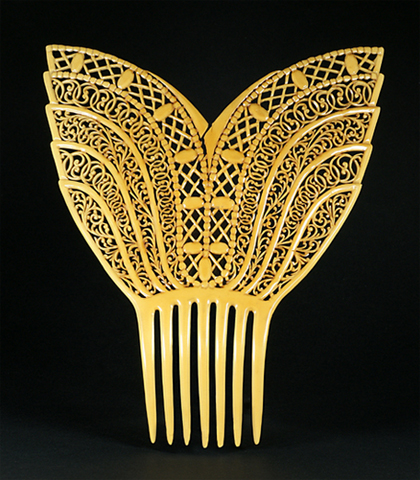
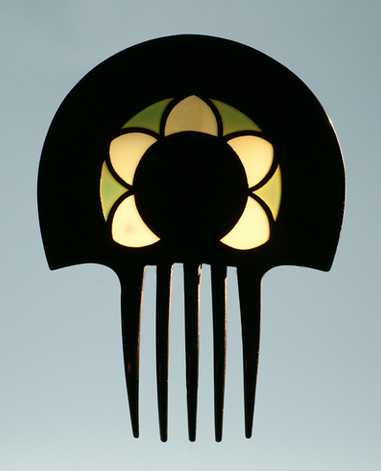
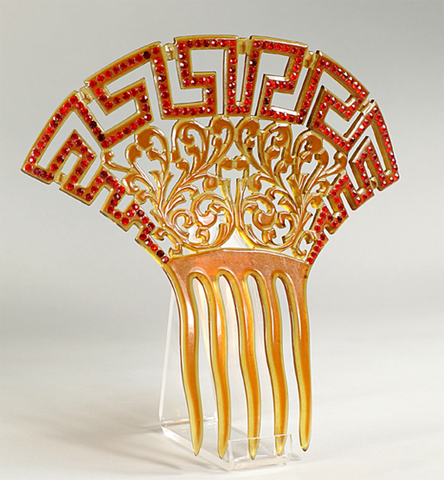
Auguste Bonaz: from The Creative Museum, The Mary Bachman Collection, The Myrna Klitzke Collection, and The Jo Sullivan Collection.
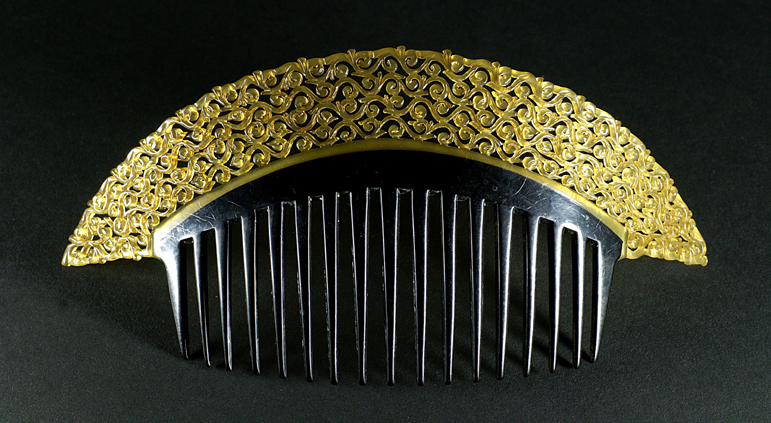
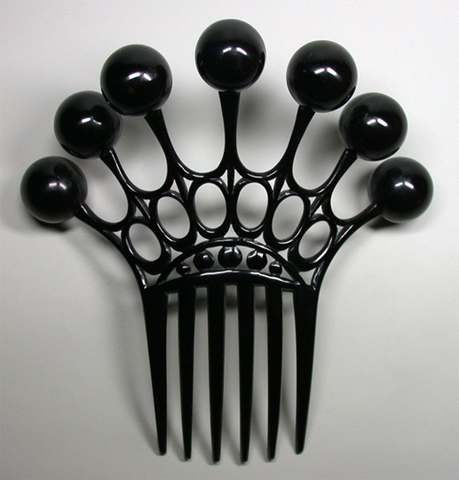
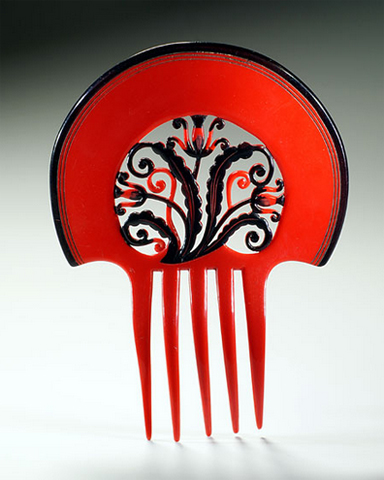
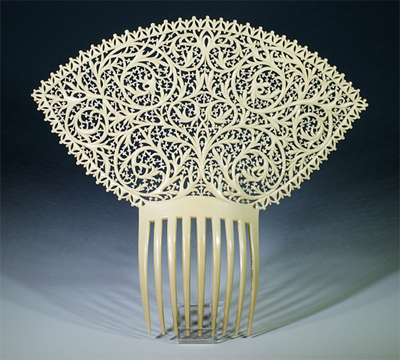
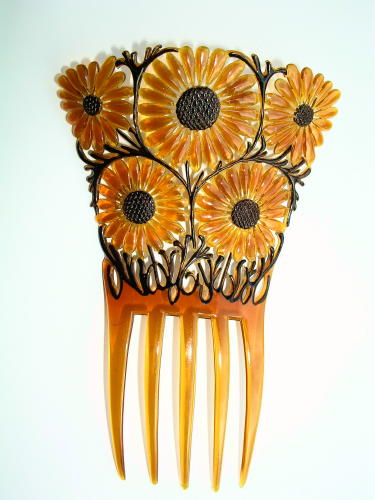
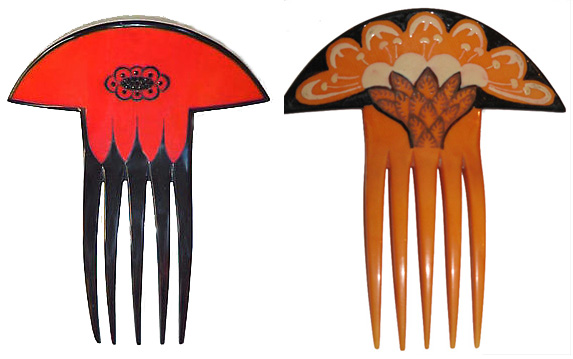
कंघी
For more scholarly research, please examine
Collector’s Guide to Hair Combs: Identification and Values by Mary Bachman
The Comb: Its History and Development by Jen Cruse
Comb Making in America by Bernard W. Doyle
Le peigne: Dans le monde by Robert Bollé
